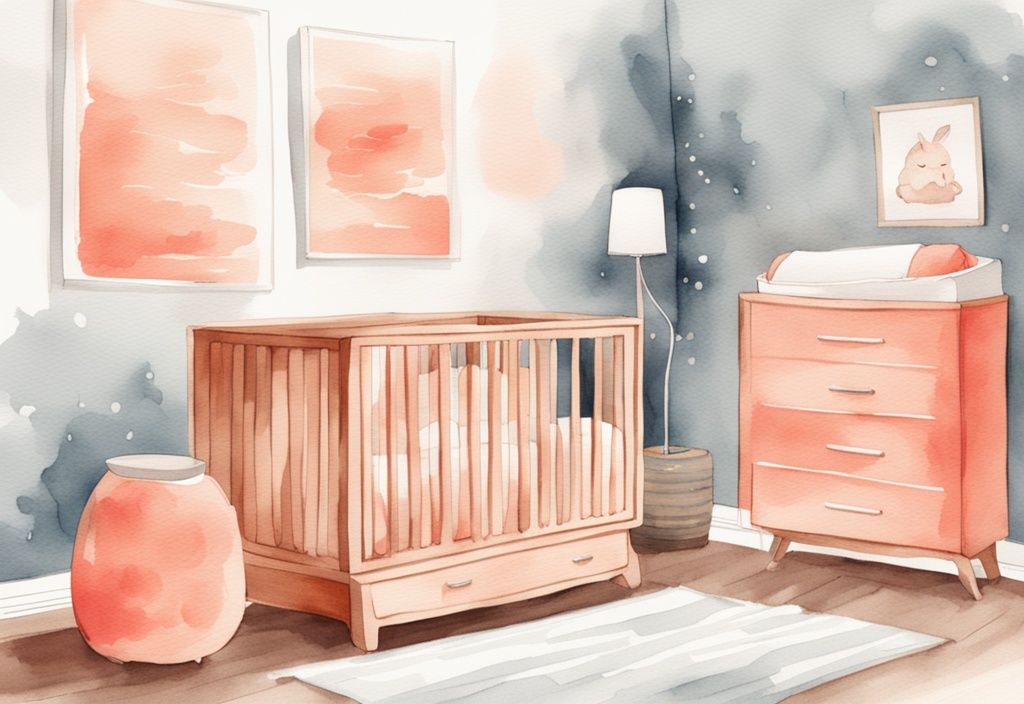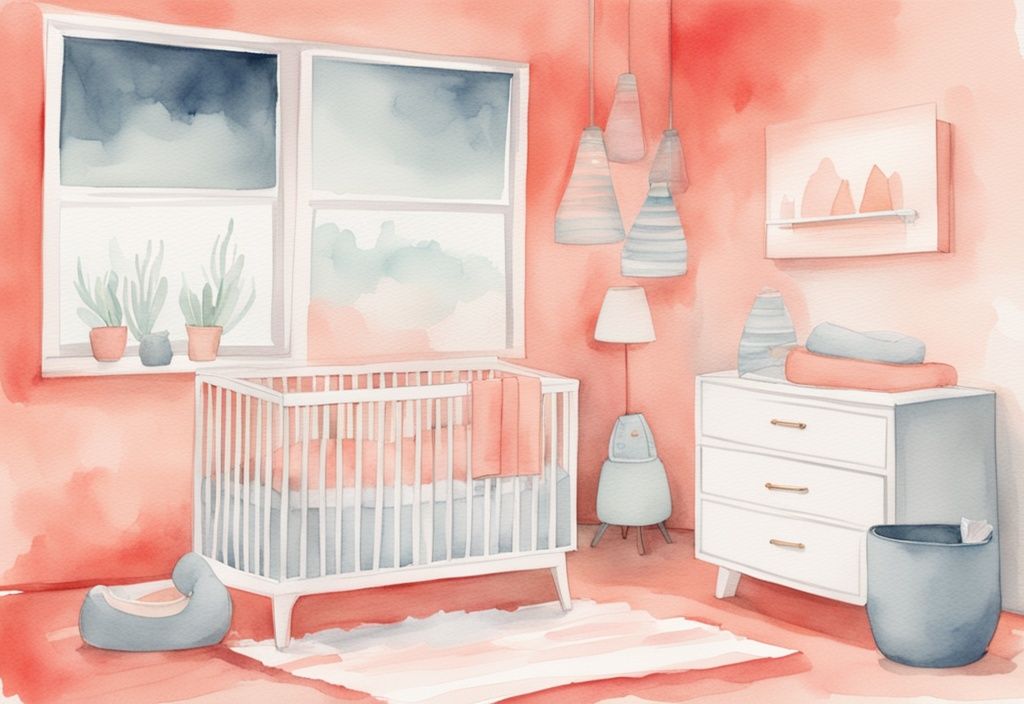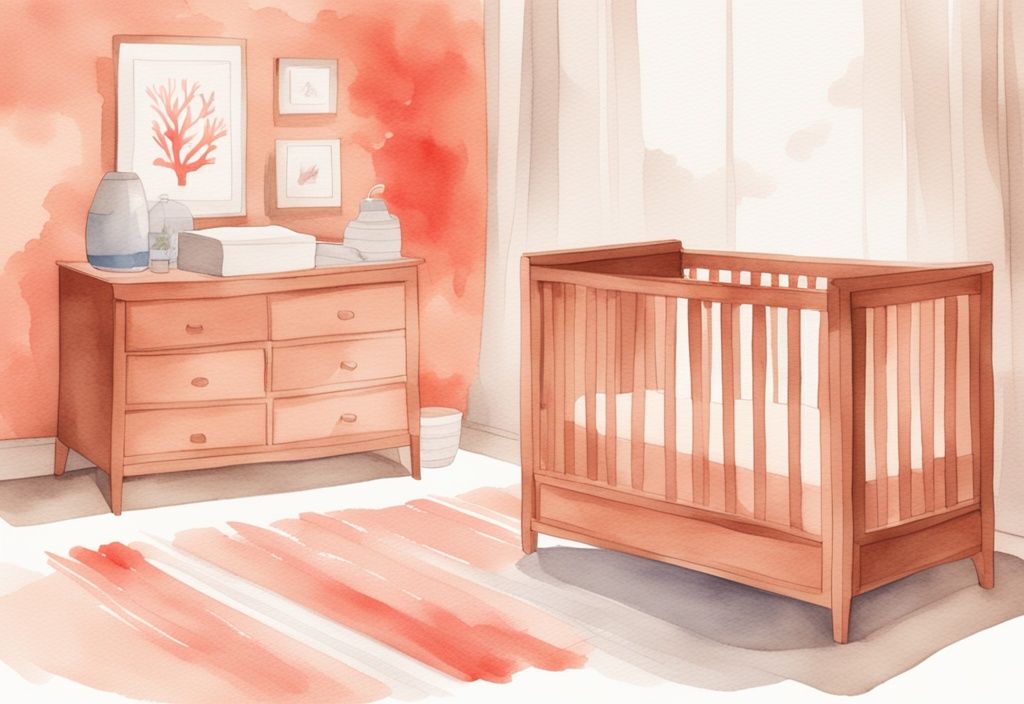Ever wondered how to ensure your baby’s room is the epitome of comfort and safety? Well, the secret lies in the humble humidifier. As a mom of two, I’ve seen firsthand how this simple device can transform a dry, uncomfortable environment into a soothing haven for your little one.
In this guide, we’ll explore the many benefits of using a humidifier in your baby’s room, from easing their breathing to soothing dry skin. But with so many options out there, how do you pick the right one? Don’t worry, I’ve got you covered! We’ll delve into safety tips, essential features, and everything else you need to know to make an informed decision.
So, let’s dive in and discover how a humidifier can enhance your baby’s well-being and keep their room a sanctuary of health and tranquility. After all, our babies deserve nothing but the best, right?
Why Use a Humidifier in Your Baby’s Room?
Creating a comfortable and healthy environment for your little one is essential. A humidifier in the baby room can be a game-changer, offering numerous benefits that support your baby’s well-being, especially when considering the ideal indoor humidity levels for overall family health, particularly for those with asthma or allergies. For more information on achieving the right humidity levels, check out this helpful resource on indoor humidity. From enhancing sleep to soothing dry skin, let’s explore how a humidifier can make a difference.
Enhancing Baby’s Sleep and Breathing
Picture this: it’s a chilly winter night, and your little one is snug in their crib. But the dry air is making it hard for them to breathe comfortably. That’s where a humidifier in the baby room steps in like a silent hero. By adding essential moisture to the air, it helps babies breathe more easily, especially in those dry climates or during the cold months. The added humidity helps to thin mucus, which can alleviate congestion and lead to a more restful sleep. And let’s not forget the gentle white noise many humidifiers produce—it’s like a lullaby that soothes your baby to dreamland.
Relief for Dry Skin and Eczema
Oh, the woes of winter! Indoor heating can turn your baby’s skin into a desert, leading to dry patches and eczema flare-ups. But fear not, a humidifier in your baby’s room can be your skin’s best friend. By maintaining optimal skin moisture levels, it prevents the skin from becoming excessively dry. This added humidity can reduce the severity of eczema flare-ups, leaving your baby’s skin soft and healthy. It’s like giving your baby’s skin a big, comforting hug!
Combatting Congestion and Cold Symptoms
When your little one catches a cold, it can feel like the world is upside down. You’re searching for safe ways to ease their discomfort. A humidifier in the baby room is a natural alternative to over-the-counter medications. It keeps those tiny nasal passages moist, reducing the risk of bacterial infections and airborne viruses. The increased moisture in the air can also help alleviate congestion, making it easier for your baby to breathe and recover more comfortably from colds. It’s like having a gentle helper by your side, ensuring your baby feels better soon.
Choosing the Right Humidifier for Your Baby’s Room
Creating a cozy and safe environment for your little one is every parent’s priority. When it comes to maintaining the perfect humidity level, selecting the right humidifier in your baby room can make a world of difference. Let’s explore the different types and features to help you make an informed choice.
Understanding Different Types of Humidifiers
Cool Mist Humidifiers: Impeller, Evaporative, and Ultrasonic
Choosing a humidifier in your baby room can feel overwhelming, but cool mist options are a great place to start. They’re known for their safety, as they don’t heat water, which means no burn risks—phew! Impeller humidifiers use a rotating disk to create a refreshing mist, while evaporative models rely on a fan to gently increase humidity with a wet wick. Ultrasonic humidifiers, on the other hand, use vibrations to produce a fine mist. Just remember to use distilled water to avoid releasing minerals into the air.

Warm Mist Humidifiers: What You Need to Know
Now, warm mist humidifiers might sound appealing because they boil water to create steam, which can help kill germs. But in a baby room, they’re not the best choice due to the risk of burns. Safety first, right? Stick with cool mist options to keep your little one safe and sound.
Key Features to Look For
Size and Capacity
When picking a humidifier in your baby room, size matters! You want one that fits the room perfectly to ensure effective humidification. Also, think about the water tank capacity—larger tanks mean fewer refills, which is a lifesaver for busy parents juggling a million things at once.
Safety Features: Automatic Shut-Off and More
Safety is non-negotiable when it comes to your baby. Look for humidifiers with an automatic shut-off feature. This prevents the device from running dry and overheating. Plus, a stable design is crucial to avoid tipping and leaking. After all, peace of mind is priceless in a nursery.
Extra Features: Nightlight and White Noise
Some humidifiers come with bonus features that can make your baby room even more inviting. A subtle nightlight can be comforting, while white noise capabilities offer a soothing backdrop for sleep. And if you’re into tech, smart features allow for remote adjustments, making life just a tad easier.
Ensuring Safety When Using a Humidifier in Baby’s Room
Creating a safe and cozy environment for your little one is every parent’s top priority. Using a humidifier in a baby room can be a wonderful way to maintain optimal humidity levels, but it’s essential to use it wisely. Let’s explore how to ensure your humidifier is both safe and effective.
Proper Placement and Positioning
Keeping Safe Distance from Crib and Walls
When setting up a humidifier in your baby’s room, think of it as giving your baby a gentle hug from a distance. Place the humidifier at least six feet away from the crib. This way, the mist won’t land directly on your baby’s bedding, keeping the sleeping area snug and not overly damp. Also, make sure it’s at least a foot away from the walls. This little trick helps avoid moisture buildup, which can lead to mold—something we definitely want to keep away from our precious ones.
Ensuring Stable Surface and Cord Safety
Imagine the humidifier as a little helper that needs a stable spot to do its job well. Position it on a flat, sturdy surface to prevent any tipping or leaks. And those cords? Let’s keep them tucked away, out of reach from curious little hands. Securing the cord not only prevents spills but also keeps your baby safe from accidental pulls or trips. These small steps go a long way in creating a secure haven for your little one.
Water Use and Maintenance Tips
The Importance of Using Distilled Water
Here’s a tip from one parent to another: using distilled water in your humidifier is a game-changer. It helps prevent mineral deposits from forming, which can be released into the air and potentially cause respiratory issues. Tap water often contains minerals that might pose health risks when dispersed. By opting for distilled water, you’re ensuring the air your baby breathes is as pure and safe as possible.

Cleaning and Preventing Mold
Let’s talk about keeping things fresh and clean. Regular cleaning of the humidifier is crucial to prevent mold growth and maintain its performance. Make it a habit to clean and dry the humidifier daily. This prevents moisture retention, which can lead to bacterial growth. Every now and then, give the parts a soak in a 10% bleach solution for thorough disinfection. And remember, always empty the water reservoir after use to avoid stagnant water, which can harbor bacteria.
How to Monitor Humidity Levels
Using a Hygrometer
A hygrometer is like your trusty sidekick in this humidity adventure. It helps you keep an eye on the humidity levels in the baby room, ensuring they stay within the recommended range. By measuring humidity daily, you can maintain optimal air quality, creating a comfortable and safe environment for your baby.
Maintaining the Right Humidity Level
Finding the right balance in humidity is key to your baby’s comfort and health. Aim for 30% humidity in winter and 50% in summer. This not only helps prevent mold growth but also protects your furniture. Once the desired humidity level is reached, feel free to turn off the humidifier to avoid over-humidification. It’s all about creating a healthy and happy space for your little one.
When to Consult a Pediatrician
Deciding when to consult a pediatrician about using a humidifier in your baby’s room can be crucial for your child’s health. If you’re uncertain whether a humidifier is appropriate for your baby’s specific symptoms, it’s wise to seek professional advice. This is particularly important if your baby has pre-existing respiratory conditions or if symptoms persist despite using a humidifier. A pediatrician can provide tailored guidance, ensuring that the use of a humidifier in the baby room is both safe and beneficial.
Knowing When to Seek Medical Advice
Hey there, fellow parent! Navigating the world of baby care can sometimes feel like a maze, right? When it comes to using a humidifier in your baby’s room, knowing when to reach out to your pediatrician is key. If your little one has ongoing symptoms or specific health concerns, don’t hesitate to get that expert opinion. Trust me, I’ve been there, and having a professional’s guidance can make all the difference in keeping your baby safe and comfy.
Understanding Specific Conditions and Recommendations
Now, let’s talk about those specific health conditions. If your baby has any pre-existing respiratory issues, a chat with your pediatrician about using a humidifier in the baby room is a must. They can offer advice tailored just for your precious bundle, helping you incorporate the humidifier into your routine safely and effectively. Following their recommendations means you’re creating the best possible environment for your baby’s health and comfort. Remember, it’s always okay to ask for help—you’re doing an amazing job!
FAQ
When it comes to creating a comfortable and safe environment for your little one, questions about using a humidifier in the baby room often pop up. Let’s dive into some common concerns and practical advice to ensure your baby’s room is as cozy as can be.

Is it safe to use a humidifier in a baby’s room?
Absolutely, using a humidifier in a baby room is safe when done right. It can work wonders for your baby’s sleep and breathing. Just make sure to follow a few safety tips, like choosing a cool mist humidifier and keeping it clean regularly. Trust me, it’s like giving your baby a gentle hug through the air!
How often should I clean the humidifier?
Cleaning the humidifier daily is key to keeping mold and bacteria at bay. Think of it as a little daily ritual to ensure a healthy environment for your baby. Every now and then, give it a deeper clean with a bleach solution. It’s a small step that makes a big difference.
What type of water should I use in the humidifier?
Using distilled water in the humidifier is the way to go. It helps avoid those pesky mineral deposits and keeps potential health risks at bay. Tap water might have impurities that aren’t great for your baby’s air. So, let’s keep it pure and simple!
Can I use essential oils in a baby room humidifier?
Here’s a friendly heads-up: it’s best to skip the essential oils in a baby room humidifier. They can be a bit too much for your baby’s delicate respiratory system and might cause unwanted reactions. Let’s keep things gentle and safe for our little ones.
How do I know if the humidity level is right in the baby’s room?
To keep things just right, use a hygrometer to check the humidity levels, aiming for that sweet spot between 30-50%. Adjust the humidifier settings as needed. It’s all about finding that perfect balance for your baby’s comfort and safety.
Conclusion
Using a humidifier in a baby room can truly make a world of difference for your little one’s comfort and health. Imagine this: as you add moisture to the air, it becomes so much easier for your baby to breathe, helping them drift off into a peaceful sleep, especially when the air feels dry or during those chilly winter nights. This extra humidity doesn’t just stop at better sleep; it can also soothe dry skin conditions like eczema by keeping your baby’s skin soft and hydrated.
Now, I know choosing the right humidifier might feel a bit daunting, but trust me, it’s worth it. A cool mist humidifier is usually the way to go. Why? Well, it’s all about safety—no hot steam here, which is a big relief for any parent. Plus, it’s important to think about the size and capacity of the humidifier to fit your baby’s room perfectly. Look for features like an automatic shut-off and a stable design to keep everything safe and sound.
But wait, there’s more! Regular maintenance is key to keeping things running smoothly. Cleaning your humidifier daily is a must to prevent any unwanted mold or bacteria. And using distilled water? It’s a simple step that helps avoid those pesky mineral deposits. A hygrometer can be your best friend here, helping you keep the humidity levels just right—somewhere between 30-50%.
By following these tips, you’re not just creating a comfy space for your baby; you’re building a nurturing environment where they can breathe easier, sleep better, and enjoy relief from the dry air’s common discomforts. Remember, you’ve got this, and every small step you take is a big leap towards your baby’s happiness and health.


